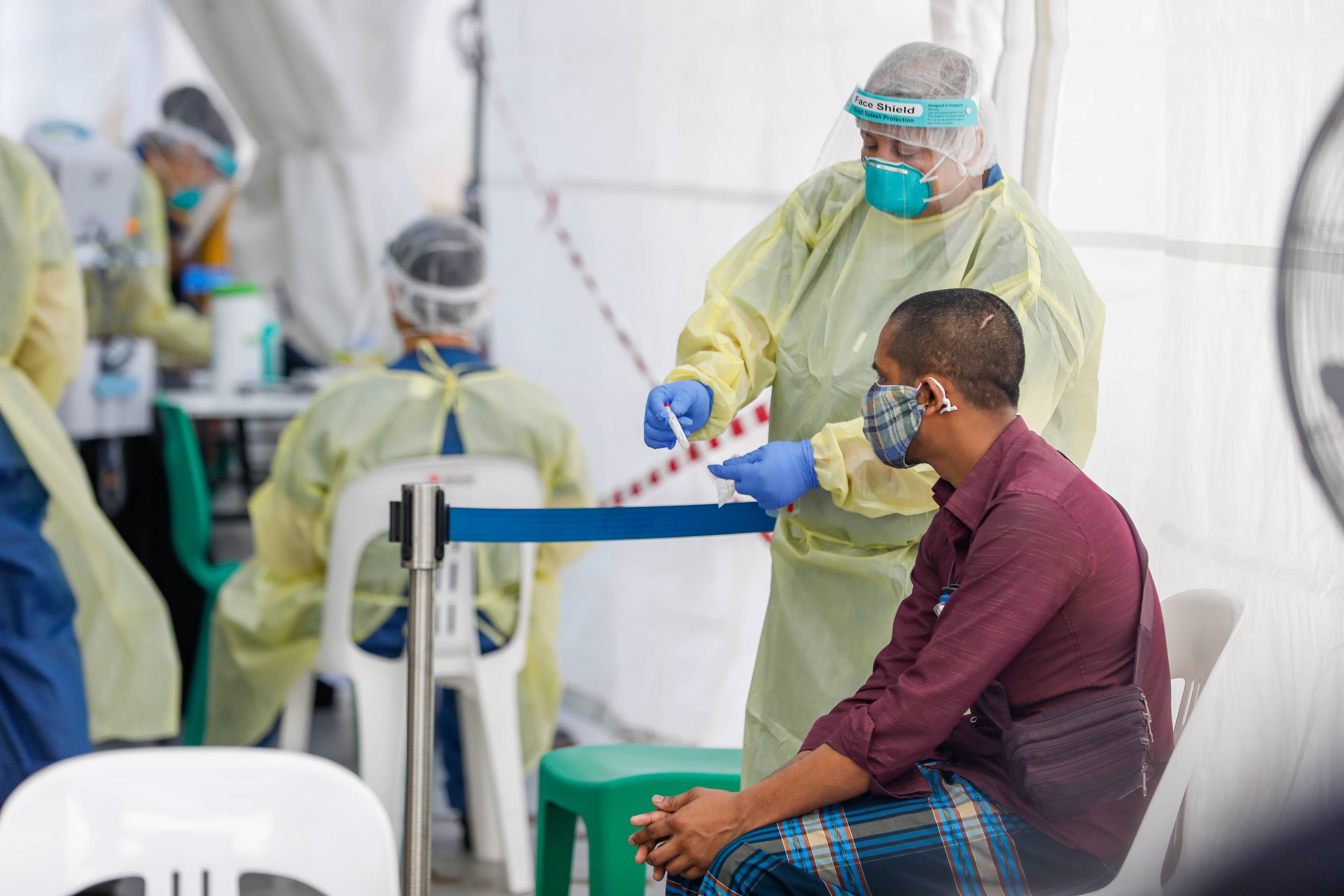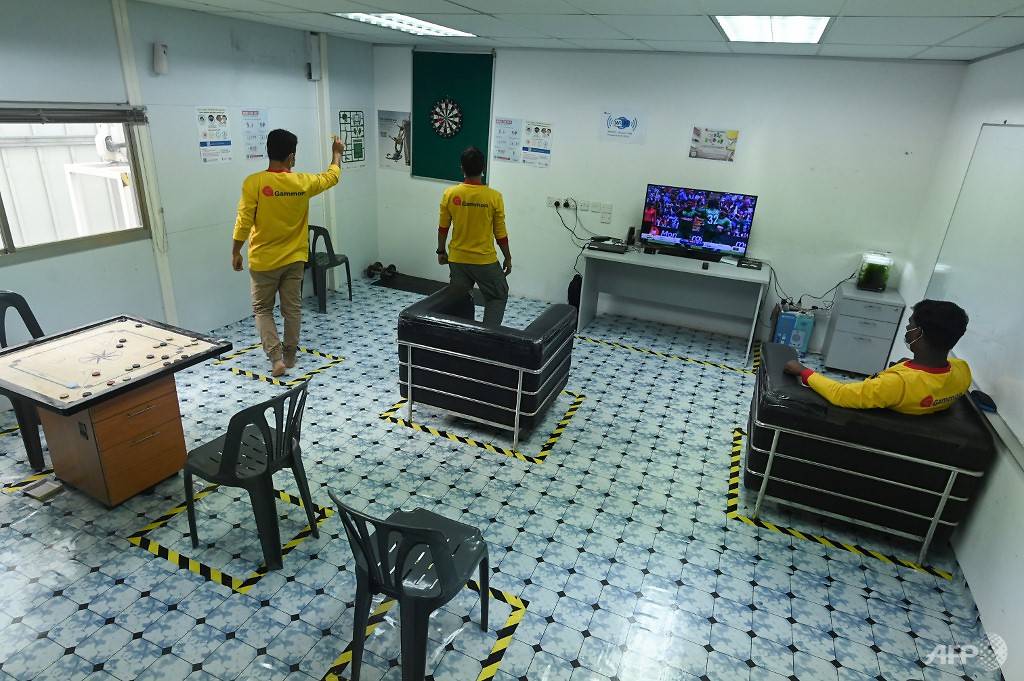SINGAPORE: About 32,000 healthy workers have been moved from dormitories to Government-provided temporary housing to “further control the transmission in the dormitories”, said Minister of State for Manpower Zaqy Mohamad in Parliament on Thursday (Jun 4).
The temporary accommodation includes sports halls, vacant Housing and Development Board (HDB) blocks, army camps, floating hotels and private apartments slated for redevelopment. Each location has an on-site isolation area.
He was responding to questions from Mr Dennis Tan and Mr Christopher de Souza on how the Government ensures the safety and health of foreign workers and the isolation of workers infected with COVID-19.
READ: Singapore to build new dormitories with improved living standards for migrant workers
For residents who need medical care, they will be sent to regional medical posts, Public Health Preparedness Clinics or nearby hospitals depending on their condition, said Mr Zaqy.
Those who do not need further medical attention may be housed in isolation areas on-site until they have recovered, while those tested for COVID-19 will be housed in a swab isolation facility until test results are known.

Onsite medical facilities for workers at foreign worker dormitory Avery Lodge. (Photo: Singapore Ministry of Manpower)
Those who test positive will be transferred to the appropriate care facility.
“In the medium term, the Government will continue to build up more temporary housing accommodations to reduce the density in the existing dormitories,” he said, adding that the new dormitories will have enough sick bays and isolation rooms to quickly isolate sick or infected workers.
READ: 3 workplaces asked to stop operations for not adhering to safe management measures: MOM
The measures came after large clusters of COVID-19 cases emerged in foreign worker dormitories in Singapore, with more than 32,000 workers in dormitories testing positive for the coronavirus.
About half of them have recovered, while the vast majority of the rest are recovering well. Only one currently requires hospital intensive care, said Mr Zaqy.
“Regardless of where infected workers are housed, all migrant workers living in dormitories have access to medical care and attention,” he said.

A migrant worker sits on his bed in temporary living quarters for essential migrant workers at a train station construction site during a media tour organised by the Land Transport Authority on May 5, 2020. (File photo: Reuters/Edgar Su)

Workers, who have been registered as providing essential services during the COVID-19 pandemic, relax in their temporary living quarters during a media tour in Singapore on May 5, 2020. (Photo: AFP/Roslan Rahman)
ISOLATING FOREIGN WORKERS
Up until early April, dormitory operators were required to house residents under a leave of absence or stay-home notice in a section of the dormitory separate from other residents, or in dedicated rooms.
The Manpower Ministry had instructed all dormitories to set aside isolation facilities since Jan 29, said Mr Zaqy.
“Following the emergence of large clusters of infection in certain dormitories, movement in out of such dormitories was restricted to minimise cross-infections in both directions,” he said.
For dormitories with limited transmission, close contacts of infected workers continue to be sent to government quarantine facilities or community care facilities in centralised locations.
In other dormitories, spaces were reconfigured to house workers suspected or confirmed to be infected.
BOOKMARK THIS: Our comprehensive coverage of the coronavirus outbreak and its developments
Download our app or subscribe to our Telegram channel for the latest updates on the coronavirus outbreak: https://cna.asia/telegram




